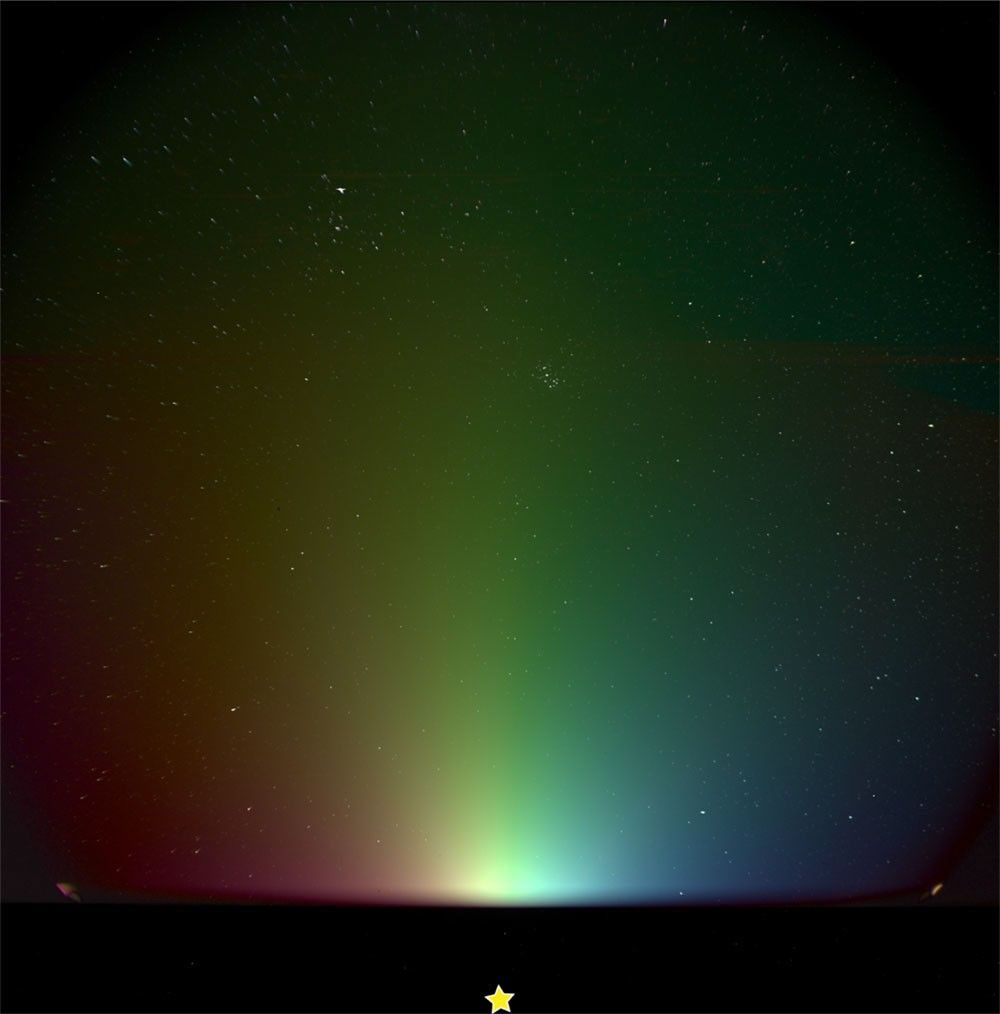A new NASA mission is already collecting data and producing striking images of the solar system. Launched in March, the PUNCH (Polarimeter to Unify the Corona and Heliosphere) mission aims to study the sun’s corona and how the sun interacts with the wider environment of the solar system. Made up of four small suitcase-sized satellites, the mission is able to capture a continuous view of the entire inner solar system thanks to a camera placed on each satellite.
Before PUNCH can start doing science though, its instruments need to be brought online. As part of that process, PUNCH’s Wide Field Imager 2 captured an image of the zodiacal light coming from the sun. This faint glow, often seen before sunrise and known as false dawn, is a result of sunlight being scattered by the dust which floats through the solar system.
In the full image below, you can see a rainbow of zodiacal light, with the position of the sun marked by a star. The image uses color to represent features of the light: the hue of the light represents its direction, and the amount of saturation represents the degree of polarization. This data also shows background stars in white, like the Pleiades star cluster above the center of the image and the Hyades star cluster, a V-shaped cluster located toward the upper left.

Other instruments on board PUNCH also collected early data, including one which captured a striking view of the moon. This image was taken by the Narrow Field Imager (NFI), which is a type of instrument called a coronagraph that has a dark disk that is used to block out light from the sun. That allows less bright objects to be seen — in this case, the moon.

The NFI will be used to study the sun’s corona, so the purpose of this image was to check whether the moon would obscure the view — and the good news is that the moon won’t interfere with the science data, as it isn’t too bright compared to the background light being studied.
PUNCH will now continue collecting data, with two more instruments to be commissioned within the next few weeks before full science operations begin in June.
Services Marketplace – Listings, Bookings & Reviews
